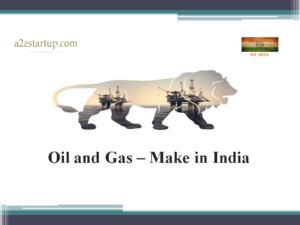Oil and Gas – Make in India
 We are the third largest consumer of crude oil and petroleum products in the world and second largest refiner in Asia. India has huge untapped potential. 60% of the prognosticated reserves of 28,000 MMT are yet to be harnessed. Despite being a net importer of crude oil, India has become a net exporter of petroleum products by investing in refineries designed for export, particularly in Gujarat.
We are the third largest consumer of crude oil and petroleum products in the world and second largest refiner in Asia. India has huge untapped potential. 60% of the prognosticated reserves of 28,000 MMT are yet to be harnessed. Despite being a net importer of crude oil, India has become a net exporter of petroleum products by investing in refineries designed for export, particularly in Gujarat.
At present our energy import dependence is 77%, and our goal is to reduce our energy import dependence by 10 percent in the next five years. The approach of our government is pro-active and I believe through continuous policy reforms and EODB measures by 2030 we can reduce our energy import dependence by 50 per cent. E&P sector has undergone complete re-engineering to reinvigorate exploration and production of India’s hydrocarbon reserves. A number of policies have been formulated to boost Exploration & Production (E&P) sector including Hydrocarbon Exploration and Licensing Policy (HELP), Discovered Small Field Policy (DSF) and Gas Pricing Reforms, which I have shared in my video series.
Earlier the exploration was confined to blocks which have been put on tender by the Government. There are situations where exploration companies may themselves have information or interest regarding other areas where they may like to pursue exploration. Under OALP Potential investors need not have to wait for the bidding rounds to claim acreages.
Another important initiative is Discovered Small Fields Policy, for monetization of 67 discoveries through international competitive bidding. Under this policy, the government is offering 67 discovered small fields in 46 contract areas spread over nine sedimentary basins on land and in shallow and deep water areas for bidding.
Based on the concept of Minimum Government — Maximum Governance, these policies are packed with all possible reforms like uniform licensing, pricing and marketing freedom, and easy to administer revenue sharing mechanism.
The Government has also prepared a separate vision for North East India, the Hydrocarbon Vision 2030 which proposes investments of Rs 1,30,000 crore in 15 years to ramp up hydrocarbon production in Northeast India.
A number of policy reforms have been taken by the Government to remove obstacles to investment and incentivize oil and gas sector on the lines of ease of doing business and minimum government maximum governance.
Here are the links to Oil and Gas Series:-
Oil and Gas – Make in India
Oil and Gas – Ease of Doing Business(EODB) in India
Digital Disruption in Oil and Gas
Digital Trends in Oil and Gas Industry
European Union’s Growth Strategy – Fossil Fuels vs. Renewable Energy






